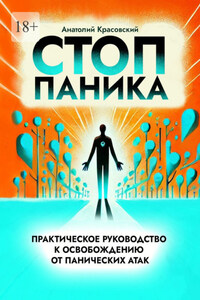Throughout human history, love has been the subject of much thought, debate, and artistic expression. Philosophers, poets, writers, and scientists have attempted to define and explain this complex and multifaceted emotion that touches every aspect of our lives. There is no single universal definition of love, as it is different for each person and manifests itself differently in different cultures and contexts.
Chapter 1: Theories of love and attachment models
The study of love is a vast and multifaceted field, encompassing a wide range of theories and models. In this chapter, we will review some of the most influential theories of love and attachment models that have been developed to understand and explain this complex phenomenon.
Sternberg’s tripartite theory of love:
This theory proposes that love is made up of three main components: passion, intimacy, and commitment. Passion is characterized by intense attraction and physical arousal, intimacy refers to feelings of closeness, connection, and understanding, and commitment is the decision to stay in a relationship despite difficulties.
Lee’s theory of love styles:
This theory identifies six different love styles: eros (passionate love), ludus (playful love), storge (friendly love), pragma (practical love), mania (obsessive love), and agape (unconditional love).
Bowlby’s attachment theory:
This theory views attachment as a basic human need that develops in early childhood and influences relationships throughout life. According to Bowlby’s theory, there are four basic attachment styles: secure, avoidant, anxious-ambivalent, and disorganized.
Working model of relationships:
This model suggests that people form internal representations of themselves and others in early relationships that influence their expectations and behavior in later relationships.
Emotion regulation model:
This model proposes that attachment plays an important role in regulating emotions. Secure attachment helps people cope effectively with stress and other difficult emotions, while insecure attachment can lead to difficulties regulating emotions.
Attachment and social cognition model:
This model proposes that attachment influences how people process social information and interact with others. Secure attachment is associated with more positive and accurate social cognition, while insecure attachment is associated with more negative and distorted social cognition.
Understanding the different theories of love and attachment models is critical to a comprehensive understanding of love and its impact on relationships. These theories and models provide a framework for further research on love and the development of interventions to improve relationships.
Chapter 2: Stages of relationship development
Relationships go through different stages throughout their existence. These stages may vary depending on the couple, but in general, the following main stages can be distinguished:
1. Meeting:
At this stage, the initial acquaintance between people occurs. They get to know each other, communicate, and begin to know each other. Mutual attraction and a desire to continue communicating arise.
2. Formation of a couple:
If the mutual attraction is strong enough, people begin to meet and form a couple. They spend a lot of time together, share their thoughts, feelings, and experiences. At this stage, emotional attachment and trust are formed.
3. Strengthening the relationship:
As the relationship strengthens, the partners become more dependent on each other. They begin to share common goals, values, and dreams. Trust and attachment deepen, and the relationship becomes more stable.
4. Living together:
At this stage, the partners may begin to live together or even get married. They are jointly responsible for everyday life, make important decisions, and build a common future. Living together requires certain compromises and mutual support.
5. Parenting:
Having children can have a significant impact on a relationship. It brings new responsibilities, challenges, and joys. Partners need to adapt to the new role of parents and find ways to combine family life with other aspects of their relationship.
6. Overcoming crises:
Relationships tend to go through periods of crisis. These can be financial difficulties, health problems, infidelity, or other difficult situations. Crises can put a relationship at risk, but they can also be an opportunity for partners to grow closer and solve problems together.
7. Long-term stability:
Ideally, the relationship evolves toward long-term stability. The partners have experienced many of life’s ups and downs together and have learned to overcome difficulties. Their relationship is based on deep affection, respect, and love.
Relationships do not always follow this linear path. There may be periods of relapse or transition to other stages. However, understanding these stages can help couples understand what they are experiencing and support the healthy development of their relationship.














